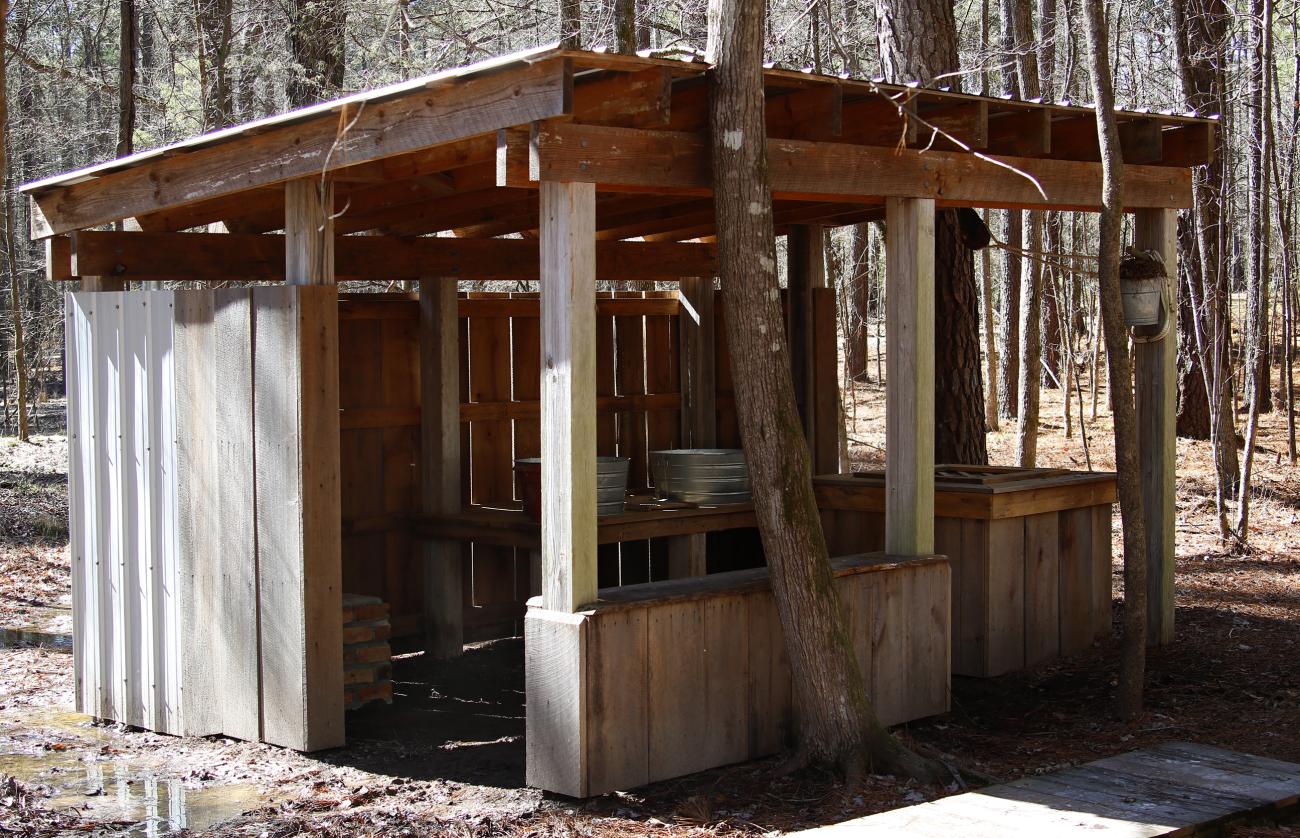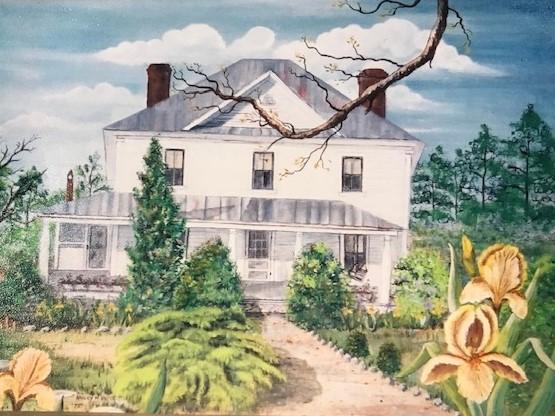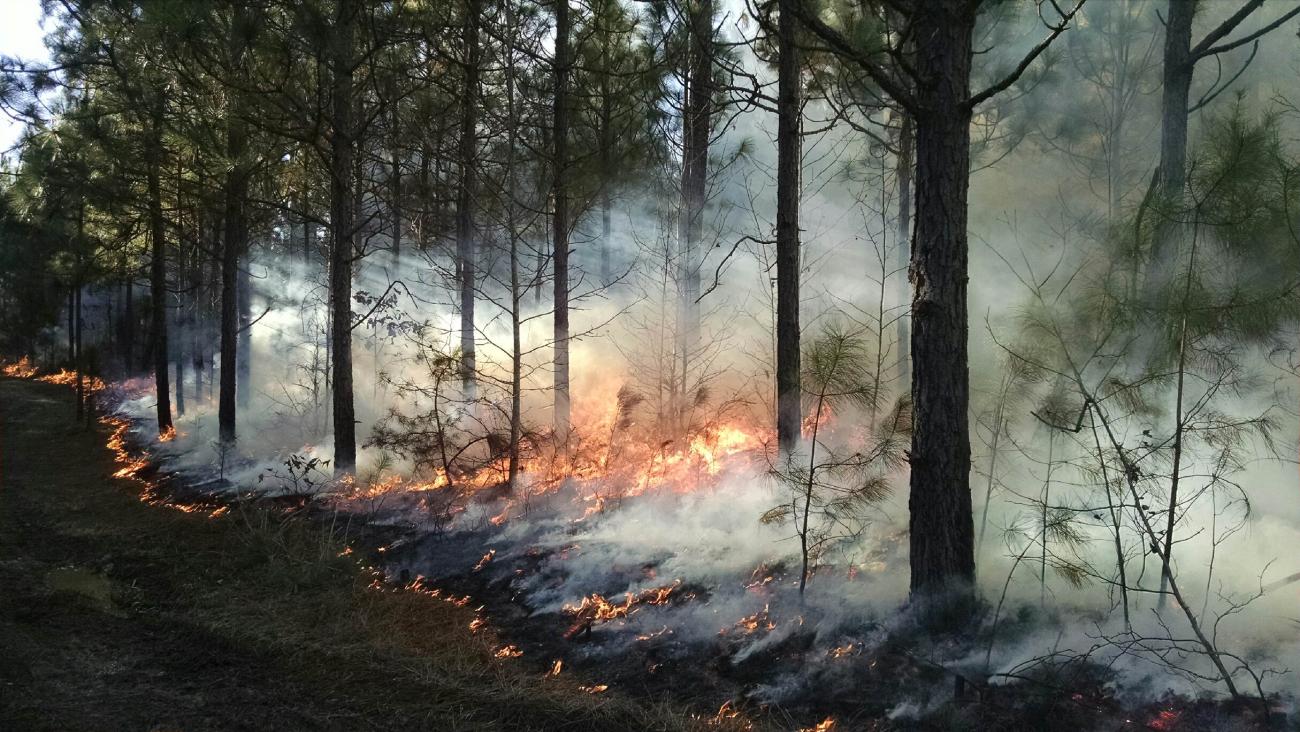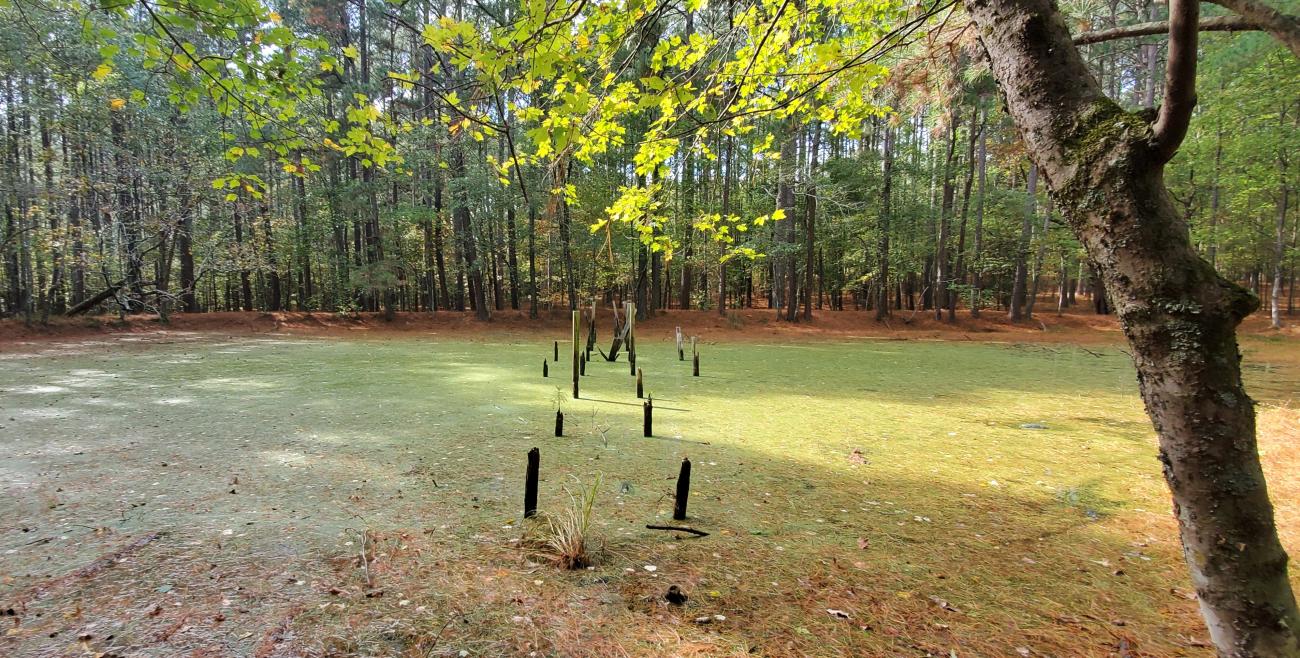
In 1985, Wake County Parks, Recreation and Open Space signed a lease with now Duke Energy Progress for a 680-acre regional park facility on Harris Lake. It was important to commemorate the families that once lived and thrived on this property and at the same time protect and manage this unique resource. The park was designed with these ideals in mind as it opened to the public in May 1999.
Long before Duke Energy Progress purchased the land that comprises Harris Lake County Park, a small community of farms and home sites existed. Interviews and research were conducted to compile information on previous landowners from the Womble, Smith, Holleman and Stevens families.
Agriculture was a way of life for the families living in the area. They raised livestock and grew cotton. Additional crops included tobacco, peanuts and sweet potatoes. Sugar caning was a popular activity to produce molasses. You can still see remnants from the home sites along the trails at the park.
Due to the decline of a once vast acreage of Longleaf Pines in North Carolina, our staff is honored to have such a unique forest resource within the park boundary. Our management of the 60-acre Longleaf Pine Forest aids in the efforts to restore this iconic tree to North Carolina.
Harris Lake County Park is home to a variety of flora and fauna - from Wood Ducks in search of nesting cavities around our ponds surrounded by native plants such as Lizard's Tail, Smartweed and Common Rush, to our pine forest that hosts a variety of mammals, birds, insects, reptiles and amphibians.
Farming Families of Harris Lake County Park
Womble Family

The Womble family resided in the area since the 1700s. Few remnants still exist today on the park property. The main Womble home, which was originally built in 1807, can be seen along our History Trail which is a section of our Peninsula Hiking Trail. The Womble house was where three generations of Wombles lived and worked. The Womble home site encompassed 240 acres of farm land, pastureland, a seven-acre cotton field, plum orchards, apple orchards, gardens and livestock ponds. The Wombles used self-sufficiency as a way to make ends meet. The pasturelands and livestock ponds provided nourishment for the working animals and livestock owned by the Wombles, while the orchards and gardens provided the Wombles themselves with the necessary provisions. Today, this land is still enriched with stories and memories of the past.
The Wombles had many buildings and ponds that they utilized in order to lead self-sufficient lives. Many of the ponds that you see on the property today were hand dug and/or bulldozed and filled in order to water livestock such as cows, hogs, horses, and mules. They were also used for family recreation like swimming and fishing.
Chicken houses were an essential resource for many families in the past. The chickens provided both meat and eggs. The Wombles had a separate house for the “layers” (those chickens who were used specifically for laying eggs) and “broilers” (those chickens raised for meat). The well for the chicken house was dry and in order to water their chickens they drained rainwater off the chicken house roof into this well.
Along the History Trail you will find a recently constructed wash house, rebuilt by an Eagle Scout in the spring of 2015, which stands in the same location and resembles the typical layout and functions of what was used by the Womble family. “The Spring”, the name used to refer to the wash house and adjacent well, provided most of the water used by the family. Wash day was usually every Monday and it was primarily the oldest sister that did the washing while the younger siblings helped to get the water, maintained or "punched" the fire to heat the water and then hung the clothes out to dry. Washing clothes for 11 people was a days’ chore. Relief from this unpleasant weekly chore came in 1938 when the family got their first gas-operated washing machine.
Watch the video of the dedication ceremony in May 2015, featuring Mr. Wallace Womble, here.
Womble family members still visit with us today and often recall fond memories of growing up here on what is now Harris Lake County Park.
Smith Family

Special notes were taken from an interview with one of the Smith family descendants, Emily Smith, on July 17, 1996, where she recalled her childhood as very different from her children’s. It was a farm family for her and a city family for her kids. She expressed how little she had compared to “all the equipment that people think they need”. Her family was one of the last in the neighborhood to get electricity during WWII. They had no running water and their drinking water was from wells. There was always enough food around for the family. They raised chickens, pigs and some beef cattle. Pigs were slaughtered in the winter and the meat salted. When a cow was slaughtered it was shared with the neighbors and then the rest canned.
Chores were daily with the boys helping out in the field and the girls helping in the kitchen with cooking, canning and cleaning. Sundays were truly a day of rest since there was no real work done. Everyone would go to church and then visit with neighbors. There was always a big Sunday dinner. Emily considered her childhood as the “Good Ole Days”!
You may find remnants of the Smith family homes around the park if walking through our native garden or casting a line down at our fishing pond.
An oral history has recently been done with some of the Smith family members to create a “StoryMap” experience to share their stories and experiences of growing up on the property.
Holleman Family

Most of the history known for this family started in the early 1900’s. The families on the property were close and it was very much a sense of community. Farming was a way of life along with self-sufficiency. The work was hard and there was plenty of it. You worked from sunup to sundown. Farming, timbering, raising livestock/poultry and digging wells were a large part of their lifestyle. The only time you left the farm was to go to the store to buy necessities that were not grown or provided by the family farm already and to attend church. Sundays were the day of rest and to visit with close neighbors.
Play was simple, infrequent and children improvised and made their own fun and games. Activities included walks to the creek, playing dolls, baseball in the pasture and making woodland doll houses.
The creation of farm ponds provided fishing and swimming for recreation as well as water for livestock and irrigation.
Yards are not like they are today. There were lawns with no grass but just open space. You did have to “sweep the yard” with anything you could find in the woods to use as a broom.
Looking back on the days growing up on the farm during the 1930’s would be considered by some the “good ole days”, but to Ruth Holleman “they were survival days! Yes, I think though it was a hard life, it was a good life.”
Natural Features
Longleaf Area

Fire is a natural component of a healthy forest. Prescribed burns help reduce the encroachment of competing shrubs and hardwoods in the forest understory and replenish nutrients in the soil. Due to the decline of a once vast acreage of Longleaf Pines in North Carolina, the North Carolina Forest Service has made it a priority to aid in its restoration.
Harris Lake County Park is home to a 60-acre Longleaf Pine forest which was planted in 1997 by a company called “Forestry Management” based out of Rocky Mount. On this site there were already a few remaining mature Longleaf Pine trees that gave additional importance to reestablish this once abundant tree in NC.
The staff actively manages this site with annual prescribed burns and savannah mix planting in partnership with Duke Energy Progress. Breaks in the burn schedule have only occurred when conditions were not adequate or staff resources were limited.
Burn History:
First burn in 2002: The entire 60 acres
Burned March 2006: 30 acres
Burned March 2008: 30 acres
Burned August 2010: 1 acre
April 9th, 2013: Burned 5 acres
January 2015: Burned ½ acre
January 12 and 13, 2016: Burned entire 60 acres
April 4, 2017: Burned 1 acre
March 5th, 2018: Burned 1 acre
February 7, 2019: Burned 20 acres
August 29, 2019: Burned 7 acres
April 4, 2022: Burned 30 acres
Wire Grass Planting
Wire grass is a native plant in Longleaf Savanna habitat. In addition to restoring the Longleaf Pine, staff are also managing the forest in general with establishing this grass within the pine stand. With the wire grass plugs provided by Duke Energy Progress and the assistance of volunteers, like the South Wake Conservationist team, we were able to plant over 1,000 wire grass plugs!
April 16, 2019: Planted at least 300 wire grass plugs in area burned on Feb. 7th, 2019
May 9, 2019: Planted at least 700 wire grass plugs
May 21, 2022: Planted 900 wire and blue stem grass plugs
Farm Ponds

There are 13 farm ponds within the 680 acres of Harris Lake County Park. These ponds were built by the farmers and landowners before the property became a park. They provided irrigation for crops like soybean and cotton and supported water for their cows, pigs and other livestock. These ponds today are used for fishing, aquatic exploration through our public programs and provide overall natural aesthetics for our visitors.
Discover Nature at Wake County Parks and Preserves!
Natural Resources Inventory Database
Want to explore the wildlife and plants seen at our Wake County parks and preserves from home? Check out the Wake County Natural Resources Inventory Database (NRID)! Anyone can use it – whether you're a birdwatcher, teacher, student, citizen scientist or just curious about nature. Explore data and photos, print checklists, or discover fun nature facts here.
If you photograph an animal or plant within the park, we would love to include your sighting in our database. Please email picture and location to joanne.stclair@wake.gov.

